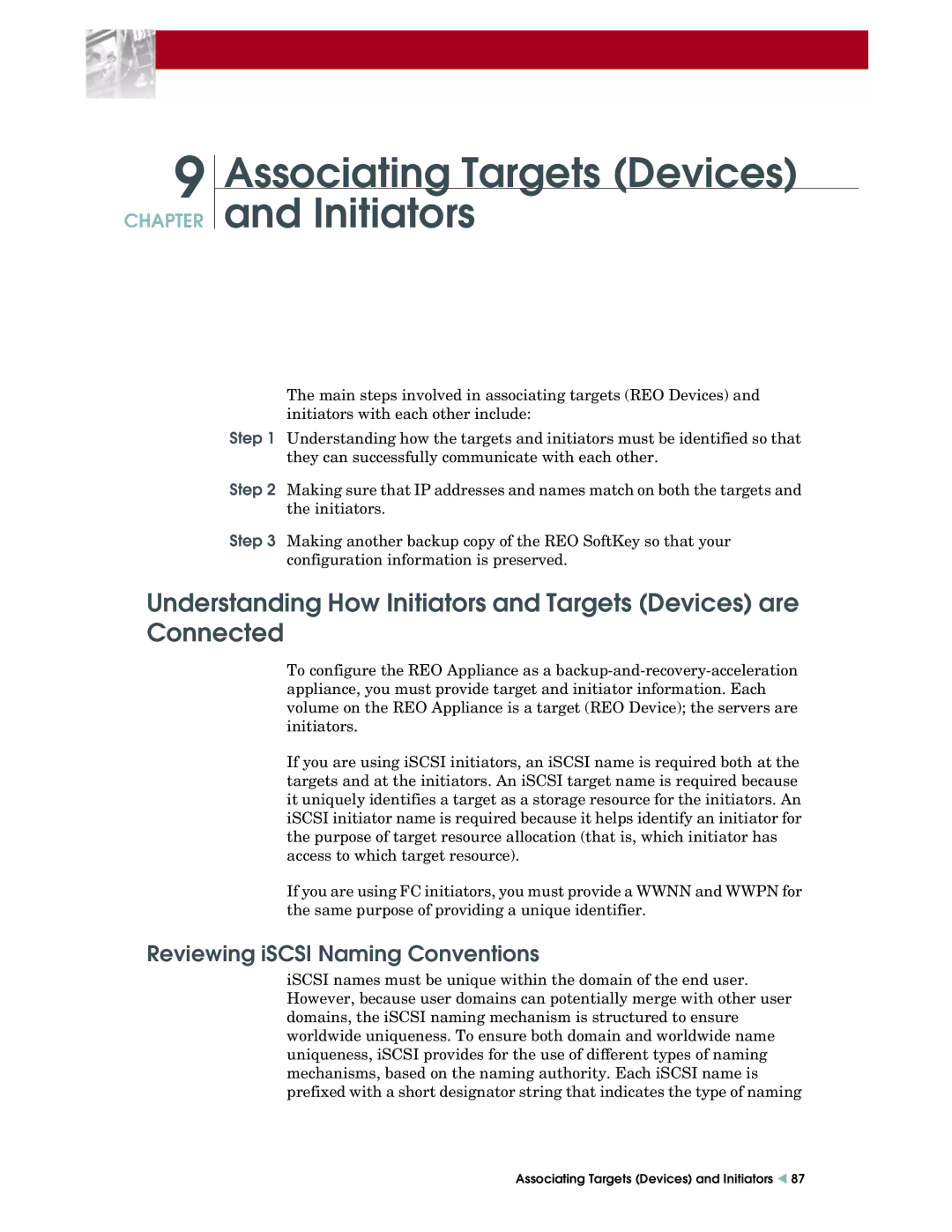
9
CHAPTER
Associating Targets (Devices)
and Initiators
The main steps involved in associating targets (REO Devices) and initiators with each other include:
Step 1 Understanding how the targets and initiators must be identified so that they can successfully communicate with each other.
Step 2 Making sure that IP addresses and names match on both the targets and the initiators.
Step 3 Making another backup copy of the REO SoftKey so that your configuration information is preserved.
Understanding How Initiators and Targets (Devices) are Connected
To configure the REO Appliance as a
If you are using iSCSI initiators, an iSCSI name is required both at the targets and at the initiators. An iSCSI target name is required because it uniquely identifies a target as a storage resource for the initiators. An iSCSI initiator name is required because it helps identify an initiator for the purpose of target resource allocation (that is, which initiator has access to which target resource).
If you are using FC initiators, you must provide a WWNN and WWPN for the same purpose of providing a unique identifier.
Reviewing iSCSI Naming Conventions
iSCSI names must be unique within the domain of the end user. However, because user domains can potentially merge with other user domains, the iSCSI naming mechanism is structured to ensure worldwide uniqueness. To ensure both domain and worldwide name uniqueness, iSCSI provides for the use of different types of naming mechanisms, based on the naming authority. Each iSCSI name is prefixed with a short designator string that indicates the type of naming
Associating Targets (Devices) and Initiators W 87
